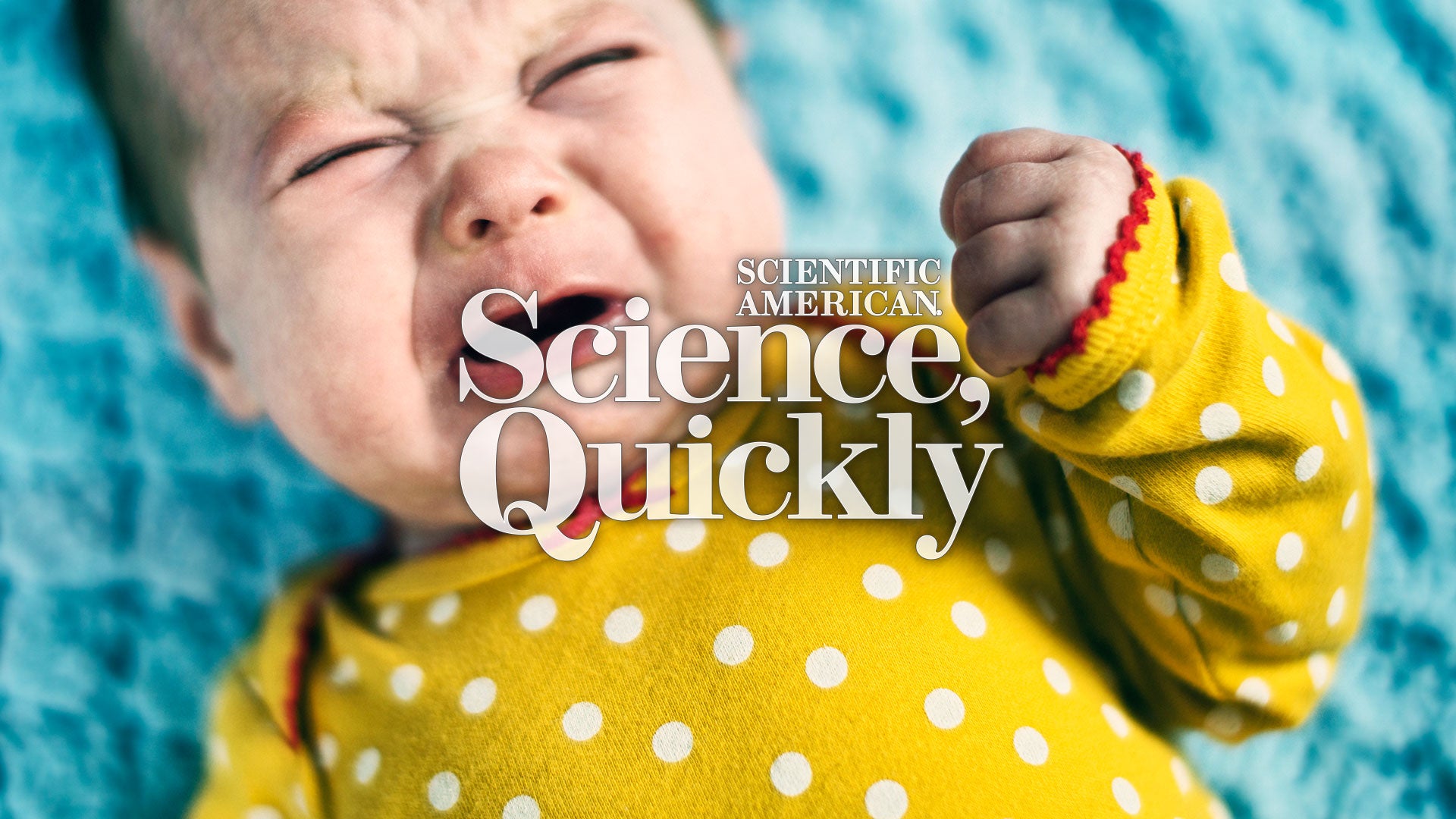
Karen Hopkin: This is Scientific American’s Science, Quickly. I’m Karen Hopkin.
If you’re a new parent or have ever had any exposure to a baby, you’re no doubt familiar with this sound.
[CLIP: Baby crying]
Hopkin: Now, the emotions you might experience when treated to this exhibition of infant lung capacity may vary, depending on the time of day, how much sleep you’ve had (if any) and how long the show has been going on.
[CLIP: Baby still crying]
Hopkin: But one thing’s for sure: Anyone who has ever heard a baby crying has wondered, “How do I make it stop?” Well, a new study shows that five minutes of motion is all it takes to get a crying baby to finally conk out. The work appears in the journal Current Biology.
Kumi Kuroda: Infant crying is a big issue for parents. But what parents can do is quite limited.
Hopkin: Kumi Kuroda is a lab head at the RIKEN Center for Brain Science in Japan—and a mother of four. She and her colleague Gianluca Esposito of the University of Trento in Italy know all the tricks.
Esposito: Some parents put their baby in the stroller and walk around.
Hopkin: Some strap them into battery-powered swings or rockers. Others swear by a late-night drive around the neighborhood. But there is one method that’s more or less universal.
Esposito: Around the world, parents know that crying babies usually calm down when they are picked up and carried.
Hopkin: And it doesn’t just work for human babies.
Kuroda: This phenomenon, the transport response, is widely seen in mammals such as mice, rats, lions—and in monkeys.
Hopkin: When toted by their moms, these baby animals quit their fidgeting and keep distress calls to a minimum. It’s a response that’s especially strong in species in which the young are physically immature and unable to care for themselves. Now, when a mama mouse picks up and runs off with a pup, it’s generally not so she can get some shut-eye.
Kuroda: It is often an emergency that forces animal parents to carry their infants …
Hopkin: To, say, avoid an encroaching predator.
Kuroda: So the infants innately cooperate with the parents by withholding their cries and movements during carrying …
Hopkin: Because their lives literally depend on it. Now, to test the transport response in humans, Kuroda and her colleagues had 21 moms try four different approaches to getting their fussy babies to hush. They held the babies while walking or just sitting. They pushed them in a stroller or placed them in a crib or on a couch—for just five minutes.
Kuroda: And we found that all the infants stopped crying, and more than half of them fell asleep, during or soon after the five minutes of carrying—even in the daytime.
Hopkin: That’s a time when they wouldn’t normally be trying to nap. Laying the babies down or sitting with them did nothing. But in the stroller—which seemed to work as well as the carry-and-walk approach—the babies relaxed. Their heart rate slowed, and they dropped off to sleep. Then came the tricky part.
Kuroda: When the mothers tried to put their sleepy babies to bed, more than one third of the infants became alert again.
Hopkin: It turns out that detaching from mom triggers a physiological response that can wake a baby right up again. That’s because …
Kuroda: Sleep is shallow in the initial phase.
Hopkin: In that early stage of sleep, which lasts about eight minutes in babies that are four to five months old, a gentle touch or a quietly closing door is enough to raise their heart rate and remind them that they were vocally objecting to their current condition just a minute or two ago. The solution?
Kuroda: Waiting five to eight minutes after sleep onset stabilizes the sleep state.
Hopkin: So Kuroda says you should sit with your snoozing offspring for an extra eight minutes before attempting to lay them down.
Kuroda: This method of five-minute walking and five-to-eight-minute sitting, is cost-free, science-based and effective. So I think it is worth trying before worrying about the infant crying or what’s wrong with the baby or getting frustrated and stressed out.
Hopkin: If it works for a lioness, it should work for a tiger mom—or any exhausted parent hoping for just a few minutes’ peace.
For Scientific American’s Science, Quickly, I’m Karen Hopkin.



